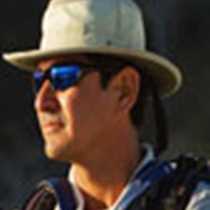Floreana Island
After navigating more than 40 nautical miles we found ourselves at Floreana, an island located in the south of the archipelago, which from a distance shows a great number of cones and craters.
We anchored before dawn in the famous Post Office Bay, which holds a barrel that has acted as a postal drop of hundreds of years. An optional call was given before breakfast, and our guests were invited to take part in an old whaler tradition; the barrel now contains postcards from all over the world with addresses which might be close to the homes of our visiting guests. The tradition is to hand deliver this mail just like whalers did in the seventeen hundreds – a tradition that continues on to this day. Some of us elected to stay aboard for some good stretching directed by our Wellness Specialist.
Back onboard we enjoyed breakfast while our ship repositioned to our next site. We arrived at Champion Islet where we began all kinds of activities, starting with a Zodiac ride searching for the elusive Floreana mockingbird. We then returned to the ship to get suited up for water activities, like snorkeling and the glass bottom boat. Today’s visibility was optimal, a perfect prop for lots of fish (including sharks), mammals (like our acrobatic Galápagos sea lions) and invertebrates of different kinds (like sea stars and sea urchins): snorkeling was breathtaking.
During lunch, our captain repositioned once again – this time to an area on the main island called Cormorant Point. Our first impression at the beach we landed on was its funny color, which we learned was given to the sand by tiny little green crystals called peridot or olivine. We started the afternoon with water activities like playing at the beach for our younger explorers, swimming, kayaking and just a simple relaxing time at the shoreline for all our guests. Walks in this area take us alongside a lagoon that often has flamingos, of which today we saw two, close up, at the end of our visit. Later on, having left the lagoon behind, we arrived at a white sandy beach properly called "flour beach", an important nesting site for Pacific green sea turtles – something well known by the frigate birds that swoop down to catch hatchlings leaving their nests.
Back onboard we had our recaps and we talked about a rescue event we will never forget; and then had the pleasure to learn a great deal about Galápagos plant adaptations from our guest geologist and National Geographic expert, Kitty Coley.
Our expedition continues as we are headed for our next islands. I wish you could be here my dear reader; Galápagos does change people’s lives (it did mine). I think it is a surreal place which stays forever in your heart and mind. My time is up (I am moving to the States to be with my family) and I must say “adios Amigos, adios Galápagos”. I am not alone, we will all miss this place for sure; for all that we have experienced with all our senses and the knowledge that there is no other place on earth like it.
Call +1.800.397.3348 or contact your travel advisor




